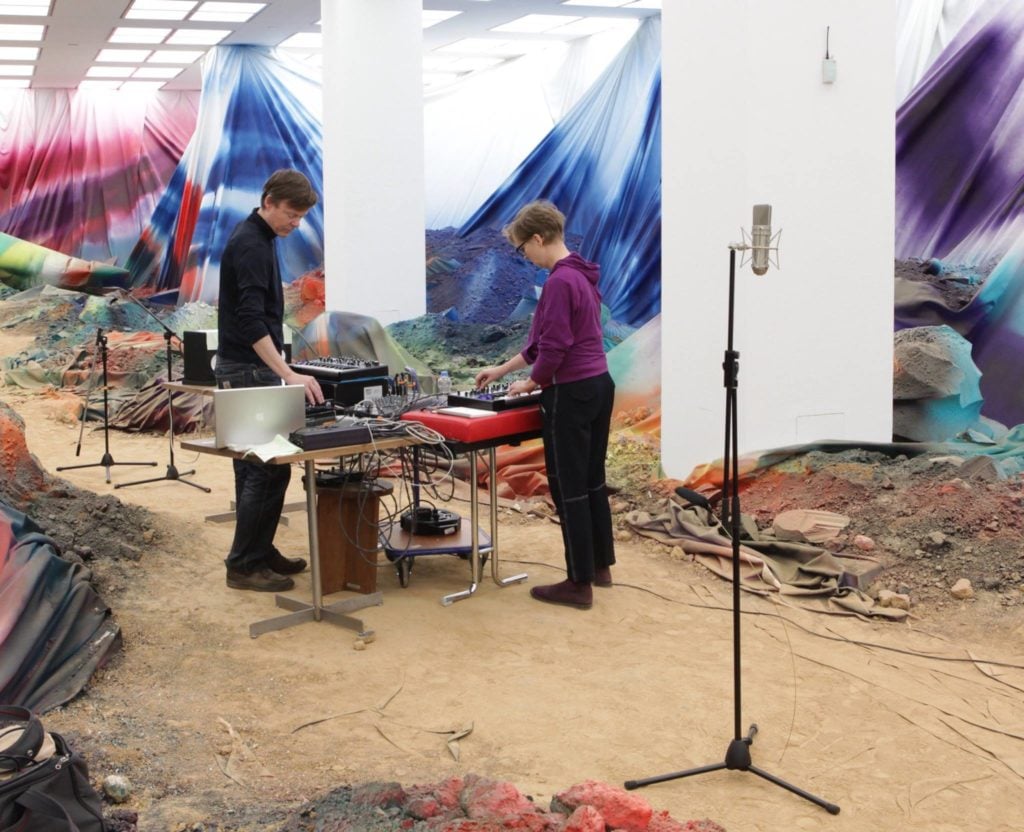People
Katharina Grosse Is Releasing an Experimental Music Album
'Tiergarten' is a collaboration between Grosse and musician Stefan Schneider.

'Tiergarten' is a collaboration between Grosse and musician Stefan Schneider.

Alyssa Buffenstein

Move over, Wolfgang Tillmans, there’s another Berlin artist trying their hand at electronic music: Katharina Grosse, best-known for her brightly-colored, large-scale, spray painted works of visual art, has announced the release date of her very first musical album.
A collaboration with post-rock and electronic musician Stefan Schneider, it is entitled Tiergarten after the sprawling park in Berlin, and will be released on March 3, 2017 on record label TAL, and distributed by MORR Music.
Both artists decided to work with one analog synthesizer each, and over two years they met for recording sessions. Playing together intuitively, the final result promises to be an improvisational conversation of abstract, ambient sounds.
“We don’t discuss, but we do come to an agreement nevertheless,” says Grosse of the collaboration.
Unsurprisingly, the album sleeve will feature visual art by Grosse and Schneider. On the cover, a close-up of a spray painted work by Grosse in blue and green on cardboard, while the inner sleeve will be printed with a mountainous landscape photograph by Schneider.
The artist and musician met in the 1980s as students at the Dusseldorf Academy, where they studied painting and photography, respectively. More recently, the two have collaborated using Grosse’s large-scale painting installations as settings for sound art performances, which eventually spawned the idea to record an album.
This 2014 performance by the duo at Kunsthaus Graz inside a monumental fabric environment by Grosse perhaps offers a preview of what to expect in March.
In a press release written by critic, musician, and editor at large of Frieze magazine Jörg Heiser, the author connects Tiergarten to city-wandering thinkers like Walter Benjamin, whose Berlin Childhood Around 1900 begins with a passage about Tiergarten and the art of losing one’s way in a city, as well as to Guy Debord and the Situationist concept of the derive. Positioned this way, Tiergarten isn’t just a dialogue between Grosse and Schneider, but also with generations of artists inspired by the German capital.